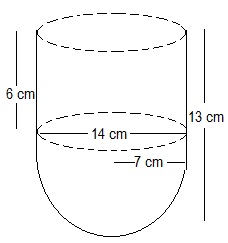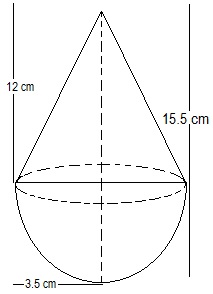NCERT Solutions of Psychology in Hindi for Class 11th: Ch 3 मानव व्यवहार के आधार मनोविज्ञान
प्रश्नपृष्ठ संख्या 63
1. विकासवादी परिप्रेक्ष्य व्यवहार के जैविक आधार की किस प्रकार व्याख्या करता है?
उत्तर
विकासवादी परिप्रेक्ष्य व्यवहार के जैविक आधार की व्याख्या इस प्रकार करता है कि विकासवादी प्रक्रिया के कारण होने वाली शारीरिक तथा मनोवैज्ञानिक विशेषताओं में भी परिवर्तन हो सकते हैं| यह प्रजाति के अस्तित्व बनाए रखने के लिए आवश्यक होता है| यह विकास पर्यावरण की माँगों के परिणामस्वरूप हुआ है| कुछ व्यवहार इस विकास में स्पष्ट भूमिका निभाते हैं| उदाहरण के लिए, आहार ढूँढने की योग्यता, परभक्षी से दूर रहना और छोटे बच्चों की सुरक्षा| ये सब जीव तथा उसकी प्रजाति की उत्तरजीविता से संबंधित उद्देश्य हैं| आधुनिक मानवों के पास ये अभिलक्षण कई हजार वर्षों से है|
आधुनिक मानवों के तीन महत्वपूर्ण अभिलक्षण उन्हें अपने पूर्वजों से अलग करते हैं-
(i) बड़ा और विकसित मस्तिष्क, जिसमें संज्ञानात्मक व्यवहार;जैसे- प्रत्यक्षण, स्मृति, तर्कना, समस्या समाधान और संप्रेषण के लिए भाषा का उपयोग करने की अधिक क्षमता|
(ii) दो पैरों पर सीधा खड़ा होकर चलने की क्षमता|
(iii) काम करने योग्य विपरीत अंगूठे के साथ मुक्त हाथ|
2. तंत्रिका कोशिकाएँ सूचना को किस प्रकार संचारित करती है? वर्णन कीजिए|
उत्तर
तंत्रिका कोशिकाओं के पास सूचना को विद्युत्-रासायनिक संकेतों के रूप में ग्रहण करने के लिए पार्श्वतंतु, काय, केन्द्रक, अंतस्थ बटन, अक्षतंतु होते हैं| पार्श्वतंतु का कार्य निकटवर्ती तंत्रिका कोशिका से या सीधे संवेदी अंगों से आने वाले तंत्रिका आवेगों को ग्रहण करना होता है| ग्रहण किये हुए संकेत काय कोशिका में भेजे जाते हैं और इसके बाद अक्षतंतु में, जिससे कि सूचना अन्य तंत्रिका कोशिकाओं और मांसपेशियों में भेजी जा सके| अक्षतंतु अपनी लंबाई के साथ-साथ सूचना का संवहन करता है| अंतिम सिरे पर अक्षतंतु छोटी-छोटी शाखाओं में बँट जाते हैं, जिन्हें अंतस्थ बटन कहते हैं| इनमें अन्य तंत्रिका कोशिकाओं, ग्रंथियों और मांसपेशियों में सूचना भेजने की क्षमता होती है|
3. प्रमस्तिष्कीय वल्कुट के चार पालियों के नाम बताइए| ये क्या कार्य करते हैं?
उत्तर
प्रमस्तिष्कीय वल्कुट के चार पालियों के नाम और उनके कार्य निम्नलिखित हैं:
• ललाट पालि- यह मुख्यतः संज्ञानात्मक कार्यों; जैसे- अवधान, चिंतन, स्मृति, अधिगम एवं तर्कना से संबद्ध है, किन्तु यह स्वायत्त और संवेगात्मक अनुक्रियाओं पर भी अवरोधात्मक प्रभाव डालता है|
• पार्श्विक पालि- यह मुख्यतः त्वचीय संवेदनाओं और उनका चाक्षुष और श्रवण संवेदनाओं के साथ समन्वय से संबद्ध है|
• शंख पालि- यह मुख्यतः श्रवणात्मक सूचनाओं के प्रक्रमण संबद्ध है| प्रतीकात्मक शब्दों और ध्वनियों की स्मृति यहाँ रहती है तथा लिखित भाषा और वाणी को समझना इसी पली पर निर्भर करता है|
• पश्चकपाल पालि- यह चाक्षुष सूचनाओं से संबद्ध है| चाक्षुष आवेगों की व्याख्या, चाक्षुष उद्दीपकों की स्मृति और रंग चाक्षुष उन्मुखता इसी पालि के द्वारा संपन्न होती है|
4. विभिन्न अंतःस्रावी ग्रंथियों और उनसे निकलने वाले अंतःस्रावों के नाम बताएँ| अंतःस्रावी तंत्र हमारे व्यवहार को कैसे प्रभावित करता है?
उत्तर
अंतःस्रावी ग्रंथि | अंतःस्राव |
| पीयूष ग्रंथि | (a) संवृद्धि अंतःस्राव (b) जननग्रंथि पोषक हार्मोन |
| अवटुग्रंथि | (a) थाइरॉक्सिन |
| अधिवृक्क ग्रंथियाँ | (a) कोर्टिकोयड (b) एपाइनफ्राइन (c) नॉरएपाइनफ्राइन |
| अग्न्याशय | (a) इन्सुलिन |
| जननग्रंथियाँ | (a) एस्ट्रोजन (b) प्रोजेस्ट्रोन- महिला में| (c) एण्ड्रोजन- पुरूषों में| (d) टेस्टोस्ट्रोन- पुरूषों में| |
हमारे विकास और व्यवहार में अंतःस्रावी ग्रंथियों की निर्णायक भूमिका होती है| ये विशेष रासायनिक द्रव्य प्रवाहित करती हैं जिन्हें अंतःस्राव कहते हैं जो हमारे कुछ व्यवहारों को नियंत्रित करता है| सभी अन्तःस्रावों का सामान्य प्रकार्य हमारे व्यवहारपरक कल्याण के लिए निर्णायक होता है| अंतःस्रावों के संतुलित स्राव के बिना शरीर आंतरिक संतुलन को बनाने में सक्षम नहीं होता| यदि अंतःस्राव में वृद्धि न हो तो दबाव की स्थिति में हम पर्यावरण के संभाव्य खतरों के प्रति प्रभावी प्रतिक्रिया नहीं कर सकते| यदि अन्तःस्राव स्रावित न हो तो हमारी संवृद्धि नहीं हो सकती, हम परिपक्व नहीं हो सकते और न ही प्रजनन संभव हो सकता है|
5.स्वायत्त तंत्रिका तंत्र किस प्रकार आपातकालीन स्थितियों में कार्य-व्यवहार करने में हमारी सहायता करता है?
उत्तर
यह तंत्र उन क्रियाओं का संचालन करता है जो सामान्यतः हमारे प्रत्यक्ष नियंत्रण में नहीं होती| स्वायत्त तंत्रिका तंत्र के दो खंड हैं: अनुकंपी खंड और परानुकंपी खंड| यह आपातकालीन स्थितियों को संभालने का करी करता है जैसे संघर्ष या पलायन कि स्थिति में| इस आपातकाल में पाचन क्रिया रूक जाती है, रक्त आंतरिक अंगों से मांसपेशियों की और दौड़ने लगता है, तथा श्वास गति, ऑक्सीजन आपूर्ति, हृदयगति और रक्त शर्करा का स्तर बढ़ जाता है|
6.संस्कृति का क्या अर्थ है? इसकी मुख्य विशेषताओं का वर्णन कीजिए|
उत्तर
संस्कृति का तात्पर्य ‘पर्यावरण के मानव निर्मित भाग’ से है| इसमें बहुत से लोगों के व्यवहार के साथ-साथ हमारे अपने व्यवहार के विभिन्न उत्पाद सम्मिलित होते हैं| ये उत्पाद भौतिक वस्तुएँ (यथा, औजार, मूर्तियाँ), विचार (यथा, श्रेणियां, मानक) या सामाजिक संस्थान (यथा, परिवार, विद्यालय) हो सकते हैं|
इसके मुख्य विशेषताएँ निम्नलिखित हैं:
•संस्कृति उन लोगों के व्यवहारात्मक उत्पादों को सम्मिलित करती है जो हमसे पहले आ चुके हैं|
•इसमें कुछ मूल्य होते हैं जो प्रकट किए जाते हैं और उनको प्रकट करने के लिए एक भाषा होती है|
•यह एक जीवन पद्धति है जो हम में से बहुत लोगों के द्वारा अपनाई जाती है जो उस परिवेश में बड़े होते हैं|
•इसे कुछ प्रतीकों में अभिव्यक्त अर्थों के रूप में समझा जाता है जो कि ऐतिहासिक रूप से लोगों में संचारित होते हैं|
7.क्या आप इस कथन से सहमत हैं कि ‘जैविक कारक हमें समर्थ बनाने की भूमिका निभाते हैं जबकि व्यवहार के विशिष्ट पहलू सांस्कृतिक कारकों से जुड़े हैं’| अपने उत्तर के समर्थन के लिए कारण दीजिए|
उत्तर
हाँ, ‘जैविक कारक हमें समर्थ बनाने की भूमिका निभाते हैं जबकि व्यवहार के विशिष्ट पहलू सांस्कृतिक कारकों से जुड़े हैं’| हमारे कई व्यवहार अंतःस्रावों से प्रभावित होते हैं तो अन्य कई व्यवहार प्रतिवर्ती अनुक्रियाओं के कारण होते हैं| काम-व्यवहार में मनुष्यों और जानवरों में अंतःस्राव और प्रतिवर्ती क्रियाएँ समान रूप से होती है| जबकि जानवरों में काम-व्यवहार काफी सरल और प्रतिवर्ती होता है| मनुष्यों में यह इतना जटिल होता है कि इसे प्रतिवर्ती बिलकुल भी नहीं कहा जा सकता| मानव काम-व्यवहार में साथी का चुनाव एक मुख्य विशेषता होती है| चुनाव का यह आधार भिन्न समाजों में भिन्न होता है, और एक ही समाज में भिन्न होता है| मानव काम-व्यवहार कई नियमों, मानकों, मूल्यों और कानूनों से नियंत्रित होता है| मनुष्य के व्यवहार को समझने में केवल जैविकीय कारक ही हमारी बहुत ज्यादा सहायता नहीं कर सकते| जैविकीय और सांस्कृतिक शक्तियों की परस्पर-क्रिया के द्वारा मानव प्रक्रिया विकसित हुई है|
8.समाजीकरण के मुख्य कारकों का वर्णन कीजिए|
उत्तर
समाजीकरण के मुख्य कारक निम्नलिखित हैं:
• माता-पिता- बालक के विकास पर सबसे अधिक प्रत्यक्ष और महत्वपूर्ण प्रभाव माता-पिता का पड़ता है| माता-पिता बच्चों के बीच उनके कुछ व्यवहारों को प्रोत्साहित तथा कुछ को हतोत्साहित करते हैं| वे बच्चों को भिन्न प्रकार की स्थितियों में रख के उन्हें विध्यात्मक अनुभव, सीखने के अवसर और चुनौतियाँ प्रदान करते हैं| जीवन की वे स्थितियाँ भी जिनमें माता-पिता रहते हैं (गरीबी, बीमारी, कार्य-दबाव, परिवार का स्वरुप), उन शैलियों को प्रभावित करती हैं जो माता-पिता अपने बच्चों को समाजीकृत करने करने के लिए अपनाते हैं| दादा-दादी, एवं नाना-नानी से समीपता तथा सामाजिक संबंधों का ढाँचा, बच्चे के समाजीकरण में प्रत्यक्षतः या माता-पिता के माध्यम से बहुत बड़ी भूमिका निभाते हैं|
• विद्यालय- यह बच्चों को अपने शिक्षकों और समकक्षियों के साथ अन्योन्यक्रिया करने का एक सुसंगठित ढाँचा प्रदान करता है| बच्चे केवल संज्ञानात्मक कौशल (जैसे-पढ़ना, लिखना, गणित को करना) ही नहीं सीखते हैं बल्कि बहुत से सामाजिक कौशल (जैसे- बड़ों तथा समवयस्कों के साथ व्यवहार करने के ढंग, भूमिकाएँ स्वीकारना, उत्तरदायित्व निभाना) भी सीखते हैं| वे समाज के नियमों और मानकों को सीखते हैं और उनका आंतरीकरण भी करते हैं| कई अन्य विन्ध्यात्मक गुण; जैसे- स्वयं पहल करना, आत्मीय-नियंत्रण, उत्तरदायित्व लेना, और सर्जनात्मकता इत्यादि विद्यालयों में प्रोत्साहित किये जाते हैं|
•समसमूह- यह बच्चों को न केवल दूसरों के साथ होने का अवसर प्रदान करती है| ऐसे गुण जैसे- सहभाजन, विश्वास, आपसी समझ, भूमिका स्वीकृति, एवं निर्वहन भी समकक्षियों के साथ अन्योन्यक्रिया के दौरान विकसित होते हैं| बच्चे, अपने दृष्टिकोण को दृढ़तापूर्वक रखना और दूसरों के दृष्टिकोण को स्वीकार करना तथा उनसे अनुकूलन करना भी सीखते हैं| समसमूह के कारण आत्म-तादाम्य का विकास बहुत सुगम हो जाता है|
• जन-संचार का प्रभाव- दूरदर्शन, समाचारपत्रों, पुस्तकों और चलचित्रों के माध्यम से बच्चे बहुत सारी बातें सीखते हैं| किशोर और युवा प्रौढ़ अक्सर इन्हीं में से अपना आदर्श प्राप्त करते हैं| दूरदर्शन पर दिखाई जाने वाली हिंसा, परिचर्चा का एक मुख्य विषय है, चूँकि अध्ययन यह इंगित करते हैं कि दूरदर्शन पर हिंसा को देखना, बच्चों में आक्रामक व्यवहार को बढ़ाता है| समाजीकरण के इस कारक को अधिक अच्छी तरह से उपयोग करने की उपयोग करने की आवश्यकता है जिससे बच्चों में अवांछित व्यवहारों के विकास को रोका जा सके|
9.संस्कृतीकरण और समाजीकरण में हम किस प्रकार विभेद कर सकते हैं? व्याख्या कीजिए|
उत्तर
संस्कृतीकरण | समाजीकरण |
| यह उस सभी प्रकार के अधिगम को कहते हैं जो बिना किसी प्रत्यक्ष और सुविचारित शिक्षण के होता है| | यह एक ऐसी विचार प्रक्रिया है जो माता-पिता, विद्यालय, समसमूह, जन संचार जैसे कारकों के माध्यम से होता है| |
| यह मानवीय जीवन के विचार, संप्रत्यय और मूल्यों की सीख देता है क्योंकि वे हमारे सांस्कृतिक सन्दर्भ में हमें उपलब्ध हैं| | यह एक प्रक्रिया है जिसके द्वारा लोग ज्ञान, कौशल, और शील गुण अर्जित करते हैं जो उन्हें समाज और समूहों के प्रभावी सदस्यों के रूप में भाग लेने के योग्य बनाते हैं| |
| यह प्रेक्षण के माध्यम से होता है| | यह अन्योन्यक्रिया के माध्यम से होता है| |
10.परसंस्कृतिग्रहण से क्या तात्पर्य है? क्या परसंस्कृतिग्रहण एक निर्बाध प्रक्रिया है? विवेचना कीजिए|
उत्तर
परसंस्कृतिग्रहण का तात्पर्य दूसरी संस्कृतियों के साथ संपर्क के फलस्वरूप आए हुए सांस्कृतिक और मनोवैज्ञानिक परिवर्तनों से है| यह संपर्क प्रत्यक्ष या अप्रत्यक्ष रूप में होता है| परसंस्कृतिग्रहण की सहजता के लिए पुनः समाजीकरण की आवश्यकता होती है| कभी-कभी लोग इन नई बातों को सीखना सरल समझते हैं, और यदि उनका सीखना सफल रहता है तो उनके व्यवहार में उस समूह की दिशा की ओर परिवर्तन आसानी से हो जाता है, जो उनके लिए परसंस्कृतिग्रहण लाता है| दूसरी ओर, बहुत सी स्थितियों में लोग परिवर्तन की नई माँगों के अनुसार कार्य व्यवहार करने में कठिनाई अनुभव करते हैं| उन्हें यह परिवर्तन कठिन लगता है और वे द्वंद्व की स्थिति में पड़ जाते हैं|
11.परसंस्कृतिग्रहण के दौरान लोग किस प्रकार की परसंस्कृतिग्राही युक्तियाँ अपनाते हैं? विवेचना कीजिए|
उत्तर
परसंस्कृतिग्रहण के दौरान लोग निम्नलिखित परसंस्कृतिग्राही युक्तियाँ अपनाते हैं:
•समाकलन- वह अभिवृति है जिसमें दोनों में रुचि होती है, अपनी मूल संस्कृति एवं अनन्यता को बनाए रखना, साथ ही दूसरे सांस्कृतिक समूहों के साथ दैनिक अन्योन्यक्रिया करते रहना|
•आत्मसात्करण- वह अभिवृति है जिसमें व्यक्ति अपनी सांस्कृतिक अनन्यता को बनाए नहीं रखना चाहते और वे दूसरी संस्कृति का अभिन्न अंग बनने के लिए व्यवहार करते हैं|
•पृथक्करण- वह अभिवृति है जिसमें लगता है कि लोग अपनी मूल संस्कृति को धारण किए रहना मूल्यवान समझते हैं और वे दूसरे सांस्कृतिक समूहों से अन्योन्यक्रिया से बचना चाहते हैं|
•सीमांतकरण- वह अभिवृति है जहाँ अपने सांस्कृतिक अनुरक्षण की या तो संभाव्यता कम होती है या रुचि कम होती है और दूसरे सांस्कृतिक समूहों से संबंध रखने की इच्छा भी कम होती है|








